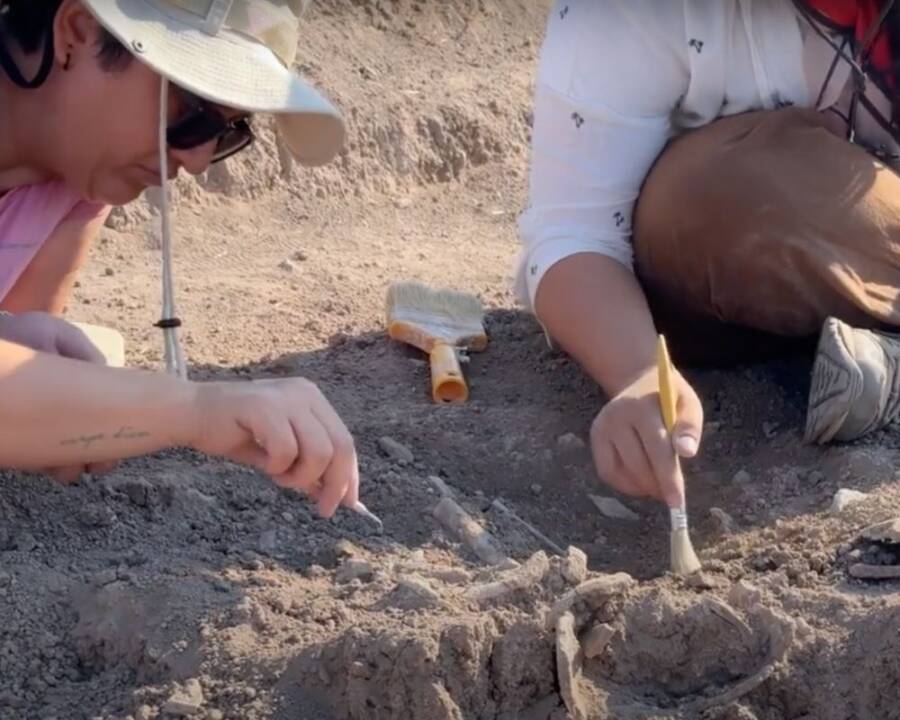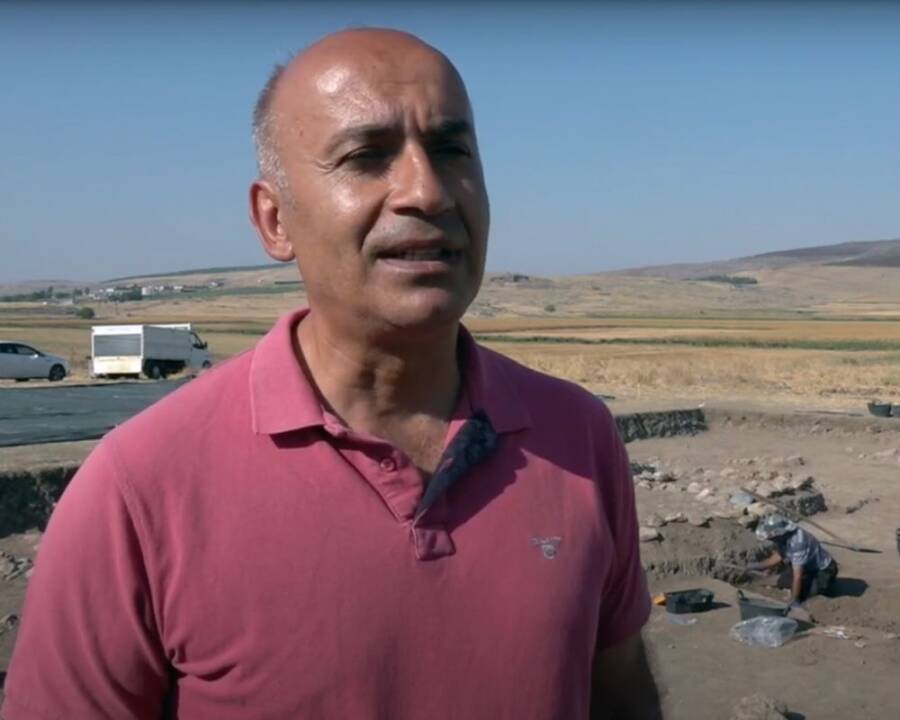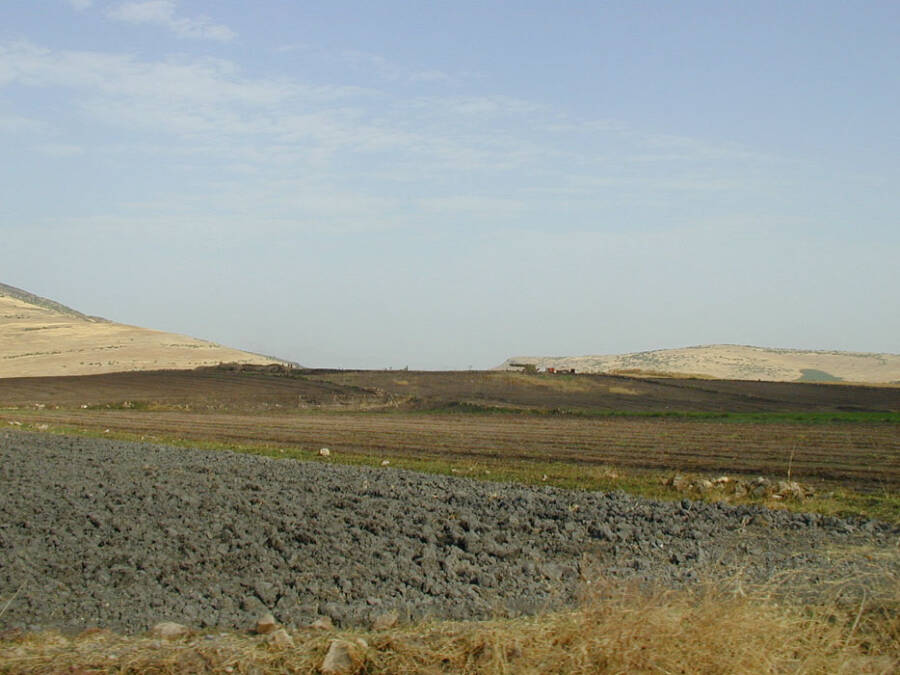Recent excavations at Domuztepe Mound in southern Türkiye revealed children's remains, silver rings, and Neolithic storage silos, offering new insights into ancient Anatolian life and burial practices.

Haber Lütfen/YouTubeArchaeologists found the 7,600-year-old skeletons of two children and an infant while carrying out excavations at Domuztepe Mound.
A team of archaeologists recently made a remarkable discovery at Domuztepe Mound in southern Türkiye: the remains of three children dating back 7,600 years. These graves are now shedding light on the burial practices of Neolithic Anatolian communities.
Archaeologists also unearthed silver rings from the same time period that likely would have been worn on the wrist of an infant. While the excavations have concluded for now, researchers plan to further analyze the artifacts to better understand ancient life in the region.
Archaeologists Unearth The Ancient Remains Of Children At Domuztepe Mound
The excavations at Domuztepe Mound in southern Türkiye were led by Dr. Halil Tekin, an associate professor in the archaeology department at Hacettepe University. The site was an ancient settlement that was inhabited around 6400 B.C.E. and abandoned 1,000 years later.

Haber Lütfen/YouTubeProfessor Halil Tekin of Hacettepe University’s archaeology department, who is heading the excavations, speaks with reporters about these most recent discoveries.
Over the last several years, Tekin’s excavations have turned up various Neolithic structures and artifacts, but these recent discoveries are among the most significant so far. Beneath a layer of soil dating back 7,600 years, archaeologists uncovered three sets of human remains. One of the skeletons belonged to a child between the ages of six and seven, another belonged to an infant, and the third has yet to be identified.
Nearby, Tekin’s team found silver rings that they believe would have been worn on the wrist of an infant. This season’s excavations also revealed Neolithic silos that were used for storing grain. The silos are of particular interest to researchers, as little is known about how ancient Anatolian communities stored their food.
Indeed, all of these discoveries are revealing new information about the people who once lived near Domuztepe Mound.
Neolithic Artifacts Paint A Picture Of Life In Ancient Anatolia
The excavations at Domuztepe Mound have offered researchers a unique glimpse into the lives of Neolithic communities in Anatolia. While Tekin’s team is preparing to further analyze their discoveries, they have already uncovered plenty of valuable information about the daily lives and rituals of the site’s ancient residents.
The silver rings were the most surprising of the discoveries. As Tekin told Türkiye Today, the earliest such artifacts previously found in the country were 5,500 years old. These rings predate those by more than 2,000 years.
“These rings were likely placed on a baby’s wrist, marking an important cultural tradition,” Tekin continued. “Their analysis will provide more information about the materials and techniques used during this period.”
Tekin wasn’t as shocked to come across the skeletons near the home his team was excavating. “We were actually expecting this grave because we had found the remains of a hearth,” he told the Anadolu Agency. “From the Stone Age to the late periods, if you find a hearth, the expectation of a baby or child grave increases, either inside or outside the house.”

Stuart Campbell/Open ContextDomuztepe Mound was an ancient settlement that was inhabited as early as 6400 B.C.E.
He elaborated, “The hearth is very important in Anatolia… We think that by burying babies and children close to the hearth, they did not want their connection with the family to be cut off when the children died.”
While the archaeologists have concluded their excavations at Domuztepe Mound for 2024, their work to piece together information about life in Neolithic Anatolia is most certainly just beginning.
After reading about the recent discoveries made at Türkiye’s Domuztepe Mound, dive into the story of Göbekli Tepe, the temple in Türkiye that dates back as far as 9500 B.C.E. Then, read about nine of the world’s oldest structures and the history behind them.





